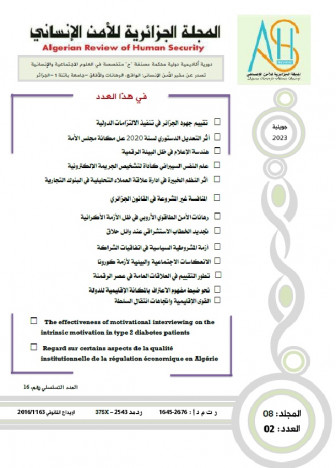Economic and environmental mechanisms to activate the role of regional communities in achieving sustainable local development
DOI:
https://doi.org/10.59791/arhs.v8i1.1913Keywords:
Economic mechanisms, environmental mechanisms, regional groups, sustainable developmen, sustainable local developmentAbstract
Regional communities are the main driver of the sustainable development wheel, as they are considered the intermediary between the government and the local citizen. They are regarded as a method of administrative organization, and a form of administrative decentralization. They also possess great authority and power for the purpose of achieving a three-dimensional development; economic, social and environmental, given that they are considered the principal partner of the central authority in managing public affairs. However, despite the competencies granted to the regional groups by the Algerian legislator in order to achieve sustainable local development, the reality in practice collides with a set of different obstacles that prevent the achievement of the goals set by the central authority at the local level. And in the face of this reality with its problems and challenges encountered by the regional groups at various levels, a vision of a sustainable local and national development strategy must be developed within an integrated perspective based on setting up mechanisms that affect and interact with the economic, social, and environmental sectors, taking into account the specificities of each region, and carried out according to an accurate scientific and objective method. Finally, this must be based on real and actual statistics of the local reality, given that regional groups are the gateway to sustainable national development.




